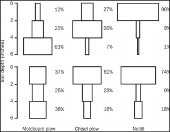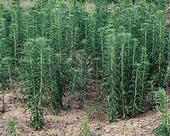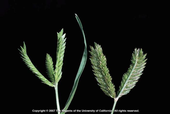- Author: Gale Perez

This little ditty was sent to the UC Weed Science group--thought I'd share this with you.
The Wild Radish Song by Bill Long
- Author: Cheryl A. Wilen
- Posted by: Gale Perez

I recently met with a grower who wanted to put down a preemergent herbicide to get ahead of winter weeds. The crop he is growing has very limited choices but Surflan A.S. could be used. Surflan and other members of the dinitroaniline class of herbicides act by disrupting cell division in the roots of germinating seeds and resulting in death of the very young seedling before it even reaches the soil surface.
However, to be effective the herbicide needs to be where the root radicle of the seeds are so it either has to be incorporated mechanically or moved into the soil through rainfall or irrigation. The commonly accepted term for this is “activation”.
From the Surflan A.S. label:
- Author: Franz J.A. Niederholzer
- Author: John A Roncoroni

Saving Glyphosate
Glyphosate, the active ingredient in Roundup, is the most commonly used herbicide in California. Highly effective, safe for the user and the environment, and now inexpensive, glyphosate is a valuable weed management tool. How valuable? Imagine the cost of weed control if you couldn’t count on glyphosate!
Resistance–the inherited ability of a plant to survive and produce healthy seed after being sprayed with enough material to kill non-resistant plants of the same species–has developed to glyphosate in several weeds in California. These include rigid ryegrass, annual ryegrass, marestail (Horseweed), Hairy fleabane, and jungle rice. Glyphosate resistance is a...
- Author: Lynn M. Sosnoskie
- Author: Stanley Culpepper
- Author: Ted Webster
Cover crops have been/are being used as organic mulches in crop production systems in order to increase soil organic matter, improve soil structure, conserve water and reduce erosion. Cover crops can also suppress weeds by serving as a physical barrier to seedling emergence, inhibiting seed germination via reduced light transmittance, through the release of allelopathic chemicals, and by preventing herbicide loss.
Attached is a video from the University of Georgia describing how to mange and roll rye (not ryegrass) for Palmer amaranth control in a cotton conservation-tillage system. Although much of the information (i.e. herbicide recommendations) may seem specific to the eastern coastal plain, the clip does provide a...
- Author: Douglas J Munier

Threespike goosegrass is a warm season perennial grass which is a problem weed in some almond orchards around Orland, California. It is easily identified by its distinctive (see photo) seed heads (spikes). It is usually a problem during the first years of an orchard. The bunch grass growth habit traps nuts at harvest. After somewhere between 5-8 years, it is too shaded to continue being a problem weed.
Pre-emergence control of threespike goosegrass is the best approach. Since goosegrass can emerge from April through August, a long persisting pre-emergence herbicide is needed. Alion is a new herbicide with more persistent weed control, which we are currently testing for April through August threespike goosegrass control. Alion...


